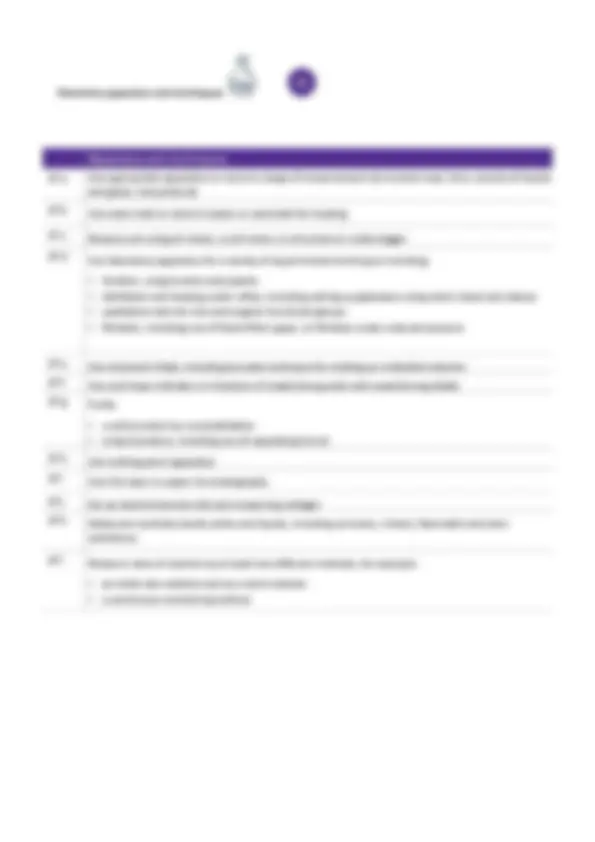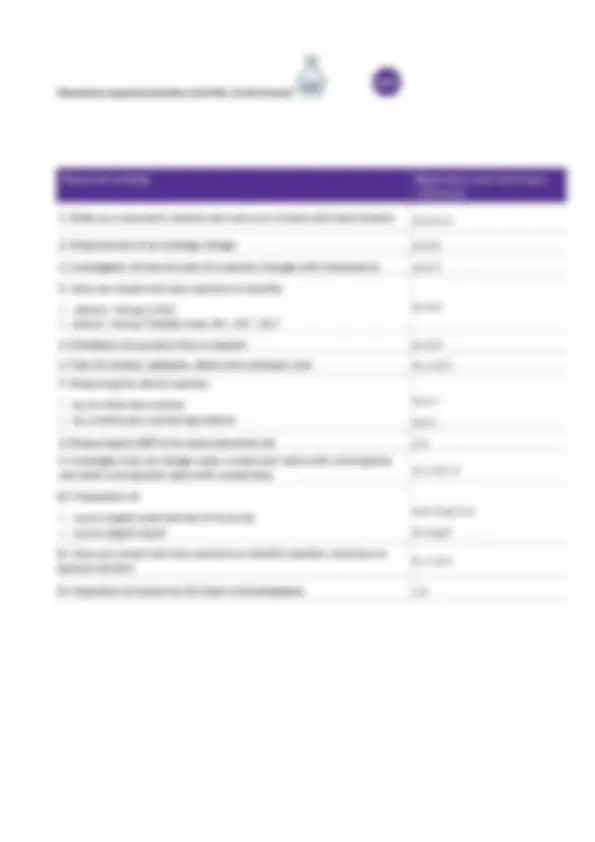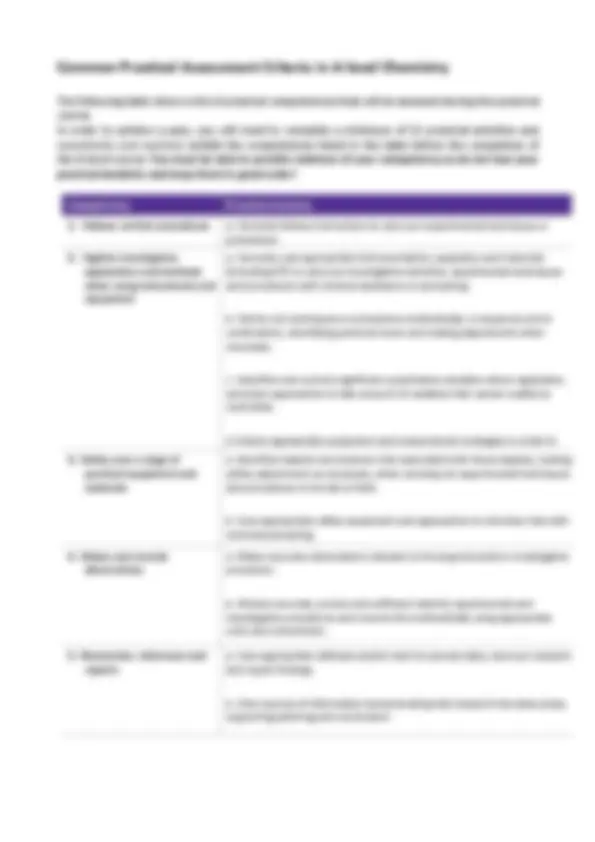





Study with the several resources on Docsity

Earn points by helping other students or get them with a premium plan


Prepare for your exams
Study with the several resources on Docsity

Earn points to download
Earn points by helping other students or get them with a premium plan
Community
Ask the community for help and clear up your study doubts
Discover the best universities in your country according to Docsity users
Free resources
Download our free guides on studying techniques, anxiety management strategies, and thesis advice from Docsity tutors
Information on the role and significance of lab books in A-level science practical experiments. Lab books serve as a complete record of experiments, support sound thinking, and help ensure accurate interpretation of results. the style and content of lab books, including the use of appropriate apparatus and techniques in various experiments. It also covers required activities and common practical assessment criteria in A-level Chemistry.
Typology: Slides
1 / 7

This page cannot be seen from the preview
Don't miss anything!




This document contains resources to support the teaching of AQA AS and A-level sciences. Some of the resources on these pages are third party content produced for sharing.
AQA is not responsible for the content of these resources or for any third party material within them.
Resource provided as an example of good practice by Ashley Law, Yarm School, Yarm.
Practical work is a key component of your A-level. Your understanding of key practical activities and techniques will be tested on the written papers and you will be assessed by your teacher on five aspects
(CPAC).
The purpose of a lab book
A lab book is a live document which is a complete record of everything that has been done in the laboratory.
A lab book is a:
Style
Notes should be recorded as experiments are taking place. They should not be a “neat” record written at a later date from scraps of paper. However, they should be written clearly, in legible writing and in language which can be understood by others.
There should be no blank spaces. Mistakes should be crossed out and re-written. Numbers should not be overwritten, erased, nor should Tippex be used. Pencil should not be used for anything other than graphs and diagrams.
Each page should be dated
Additional Sheets
Worksheets, graphs, printed information, photographs and even flat “data” such as chromatograms or TLC plates can all be stuck into a lab book. They should not cover up any information so that photocopying the page shows all information in one go. Anything glued in should lie flat and not be folded.
Content
Generally, lab books will contain:
Chemistry required activities (1-6 AS), (1-12 A-level)
b, d, k
a, k, l a, k, l
a, b, d, g, h, k b, d, g, k
1. Follows written procedures a. Correctly follows instructions to carry out experimental techniques or procedures. 2. Applies investigative approaches and methods when using instruments and equipment
a. Correctly uses appropriate instrumentation, apparatus and materials (including ICT) to carry out investigative activities, experimental techniques and procedures with minimal assistance or prompting.
b. Carries out techniques or procedures methodically, in sequence and in combination, identifying practical issues and making adjustments when necessary.
c. Identifies and controls significant quantitative variables where applicable, and plans approaches to take account of variables that cannot readily be controlled.
d. Selects appropriate equipment and measurement strategies in order to
3. Safely uses a range of practical equipment and materials
a. Identifies hazards and assesses risks associated with these hazards, making safety adjustments as necessary, when carrying out experimental techniques and procedures in the lab or field.
b. Uses appropriate safety equipment and approaches to minimise risks with minimal prompting.
4. Makes and records observations
a. Makes accurate observations relevant to the experimental or investigative procedure.
b. Obtains accurate, precise and sufficient data for experimental and investigative procedures and records this methodically using appropriate units and conventions.
5. Researches, references and reports
a. Uses appropriate software and/or tools to process data, carry out research and report findings.
b. Cites sources of information demonstrating that research has taken place, supporting planning and conclusions.
Date Practical Practical Competencies 1a 2a 2b 2c 2d 3a 3b 4a 4b 5a 5b